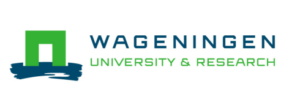WP5 – “Legal dimensions”
WP5: Legal dimensions of waterscapes at landscape scale
Leader: Prof. Marleen van Rijswick, Utrecht University; Dr. Herman Kasper Gillissen, LLM, Utrecht University
WP5 focuses on the legal dimension of the design of transformation pathways to integrated, just and adaptive, governance arrangements for the water transition to waterscapes in close collaboration with WP4 (Governance). Climate change will have severe effects on human wellbeing and prosperity. Increasing resilience of citizens and governments is one rationale behind the development of transformation pathways to new, integrated, just and adaptive governance arrangements for the water transition to waterscapes. When developing transformation pathways, the question arises who should take action and what kind of action is needed. To answer this question, the focus lies on the division of responsibilities between several layers and sectors of government and between public and private actors. It also refers to the measures that will or can be taken. It is often assumed that the government will protect its citizens, also when the threats are climate change and natural hazards (Hegger et al., 2016). Governments all over the world deal with this duty of care in different ways, based on the role of government in a specific society, depending on the institutional design and the political choices that are leading and the availability of means to do so (Wiering et al., 2015). Also, the topic of property in relation to increasing climate adaptation has to be addressed and is rather new. It focusses on the protection of property or property rights, for example by improved land use planning, mitigation measures that reduce damage in case of droughts, floods or natural hazards and building back after a flood, to be divided in ‘building back as it was’ or ‘building back better’, in order to increase resilience (Suykens et al., 2019). The necessary solution space for transformation pathways towards waterscapes, also needs law and governance elements in order to be just, legitimate and effective (Du et al., 2022). The governance arrangements for these pathways will probably be mainly implemented in the system of administrative (EU and national) environmental and planning law. A key function of environmental law is providing both proactive (preventive, mitigative) and reactive (restoration and compensation) regulation as part of governance strategies. Environmental regulation aims at influencing the conduct of and determining the relations between relevant actors, thus creating a legal framework for transformation pathways and the accompanying governance arrangements. It does so within a substantive, an institutional, an instrumental and a safeguarding dimension (Gilissen et al., 2021). All these four dimensions have to be addressed in order to be accepted and effective as climate change and the ways to dealing with it will have effects on biodiversity, humans and property. The central aim of WP5 is to understand how the law can contribute to the creation of waterscapes in the Netherlands by 2050 in a just, legitimate and effective way.
The activities of this work package can be divided into four consecutive steps:
- Analysis of use of existing legal framework: Which factors – from a legal perspective – can facilitate or hamper the transition towards waterscapes? Here we will use desk research and interviews with experts from academia and practice (case study partners) to review the existing legal framework and use of the legal framework to identify barriers and enablers.
- Using and improving the legal framework for waterscapes: How could the existing framework be used to facilitate waterscapes and what are required changes of the legal framework? In this step, we will use desk research and interviews with experts from academia and practice (case study partners) to compare the existing legal framework with the policy proposals under development and existing future visions of the case study areas. This step provides a basis for pathway development and implementation in steps 3 and 4.
- Pathway development: What should be changed to the existing legal framework to arrive at waterscapes in a just, legitimate and effective way? Given that transitions in physical systems often require preceding transformations of governance (including the legal) systems, the research then focuses on the boundary conditions and changes in the legal framework that are required to provide a proper basis and (societal) support for physical transitions to be executed. Departing from a theoretical perspective, this step creates a basis for the more practice- and implementation-oriented research activities in step 4. This step exists of further desk research, a literature review and (co-creative) workshops (led by WP7).
- Implementation of transformation pathways for the legal framework: What are concrete pathways towards a legal framework that supports waterscapes? In close collaboration with WP4 and the three case study areas, adaptation pathways are developed in co-creative workshops (led by WP7) to foster transition towards climate robust water systems.
Involved consortium partners:
Dr. Wieke Pot, Prof.dr. Art Dewulf


